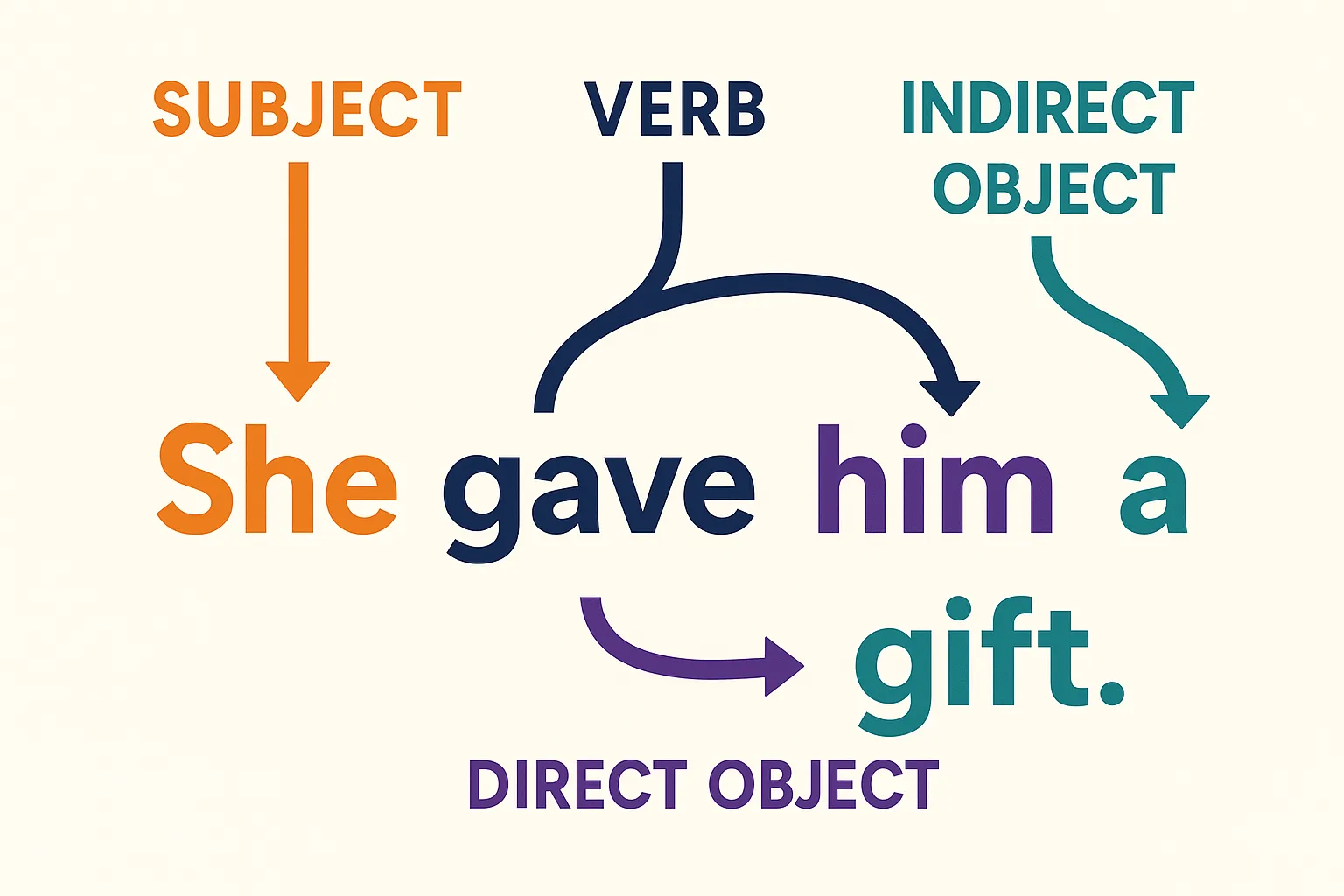Direct and Indirect Objects Explained Clearly
Understand direct and indirect objects, learn to identify them, and avoid common mistakes in English sentences.

Direct and Indirect Objects Explained Clearly
Mastering direct and indirect objects is crucial for building precise and natural English sentences. This guide explains how each object functions, shows you how to identify them, and offers tips to use them correctly—especially with pronouns and common verbs.
What Are Direct and Indirect Objects?
Objects in English sentences receive the action of the verb. There are two types:
- Direct Object: Receives the action directly.
- Indirect Object: Indicates to whom or for whom the action is done.
| Type | Example | Question to Ask |
|---|---|---|
| Direct Object | She reads a book. | What does she read? |
| Indirect Object | She gives her friend a gift. | To whom does she give a gift? |
How to Identify Direct and Indirect Objects
- Find the verb.
- Ask “what?” or “whom?” after the verb—the answer is the direct object.
- Ask “to/for whom?” after the verb and direct object—the answer is the indirect object.
Example: The teacher showed the students the video.
- Verb: showed
- What did the teacher show? The video (direct object)
- To whom did the teacher show the video? The students (indirect object)
Verbs That Take Both Direct and Indirect Objects
Certain verbs, called ditransitive verbs, often take both objects. Common examples include:
- give
- show
- send
- offer
- teach
- bring
- make (e.g., make someone a cake)
Examples:
- Give me the pen. (Indirect: me, Direct: the pen)
- She sent her mother a letter. (Indirect: her mother, Direct: a letter)
Direct and Indirect Objects with Pronouns
When using pronouns, object order and sentence structure matter:
- Order 1: Indirect object pronoun before direct object (no preposition)
- She gave me it.
- Order 2: Direct object first, with “to” or “for” + indirect object
- She gave it to me.
| Correct | Incorrect |
|---|---|
| Give me the book. | Give the book me. ❌ |
| Give the book to me. | Give me to the book. ❌ |
Common Mistakes and How to Avoid Them
- Omitting the indirect object preposition: Use to or for when the indirect object comes after the direct object.
Incorrect: She gave the book me.
Correct: She gave the book to me. - Confusing object order with pronouns: Don’t say “Give it me” in American English; prefer “Give it to me.”
- Assigning objects to verbs that can’t take them: Not every verb can have both direct and indirect objects.
Incorrect: Arrived him a letter.
Correct: He received a letter.
Summary: Mastering Object Use in English
Understanding direct and indirect objects lets you construct clear, accurate sentences. Remember to:
- Identify the verb first
- Ask the right questions to find the objects
- Pay attention to order and prepositions, especially with pronouns
- Avoid the most frequent mistakes
Build a habit of checking your object use—soon, these patterns will feel natural in your writing and speech.